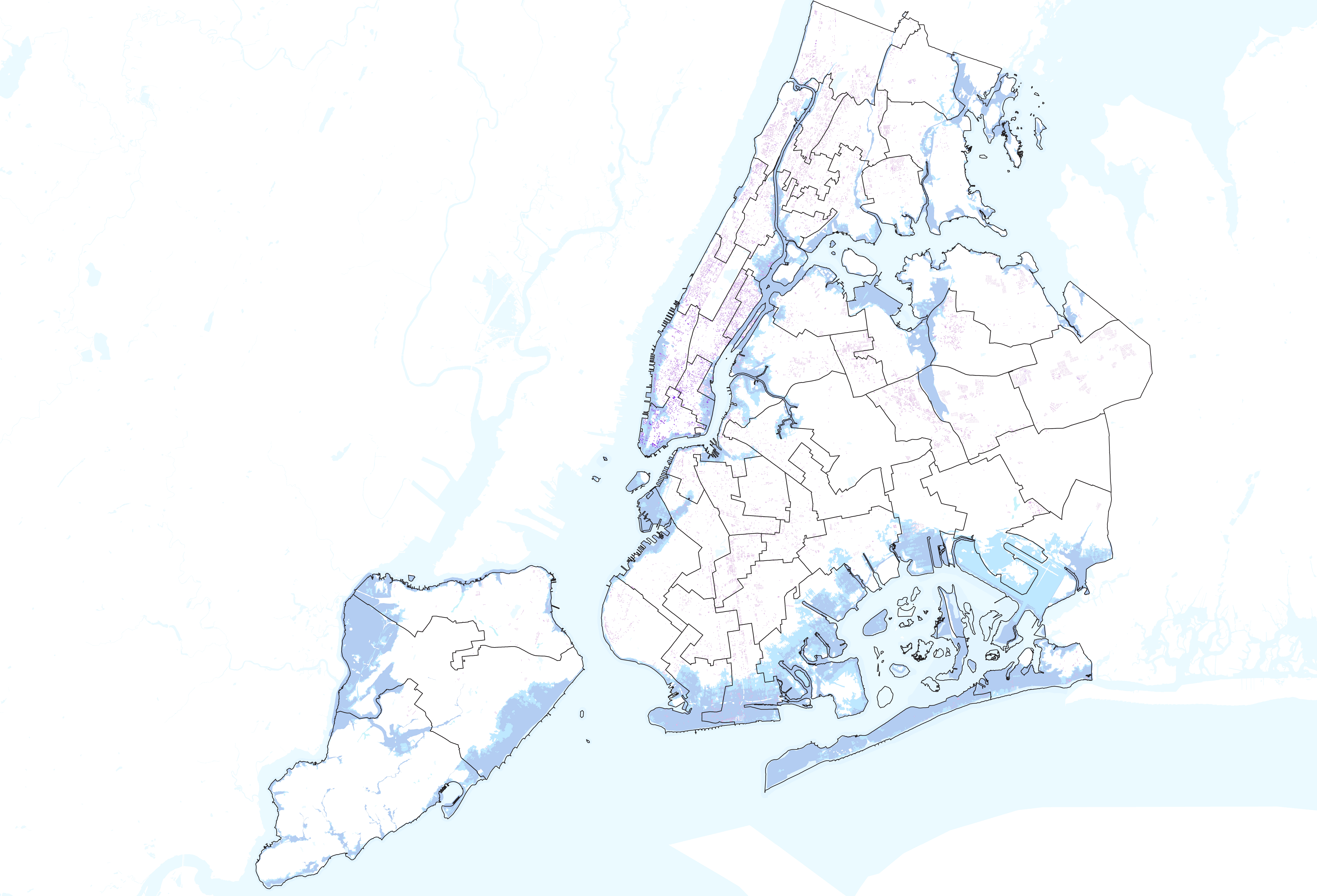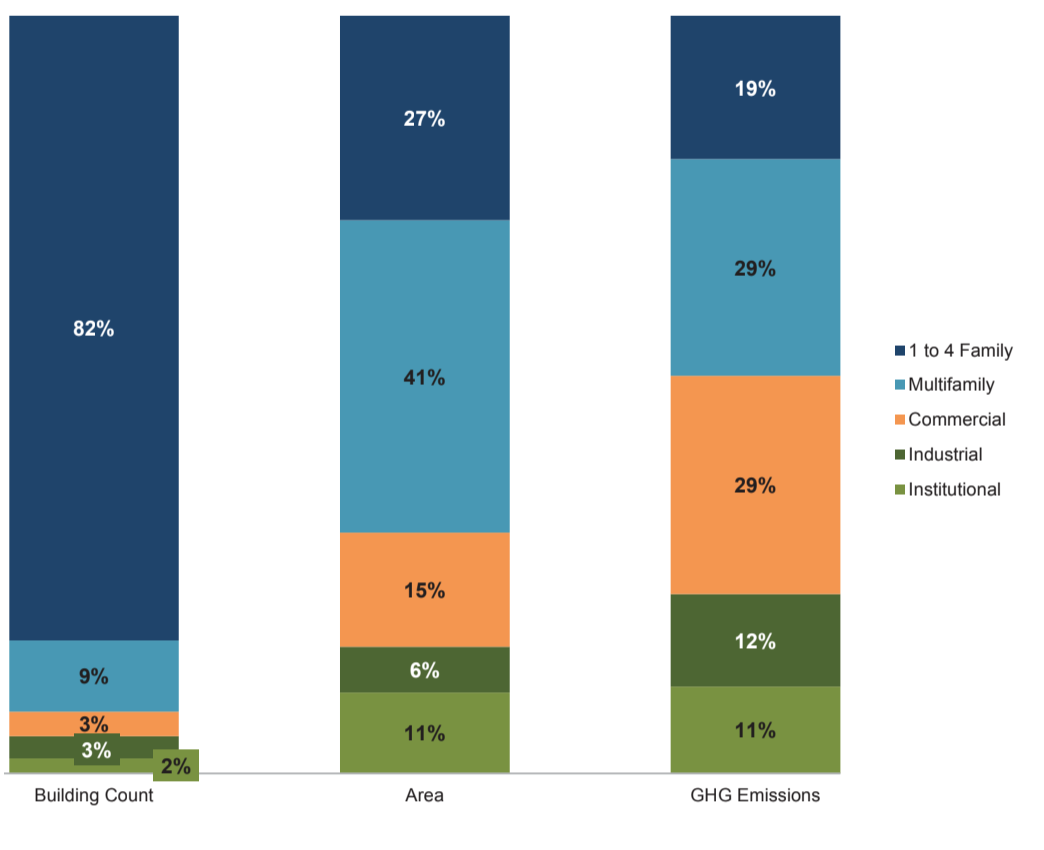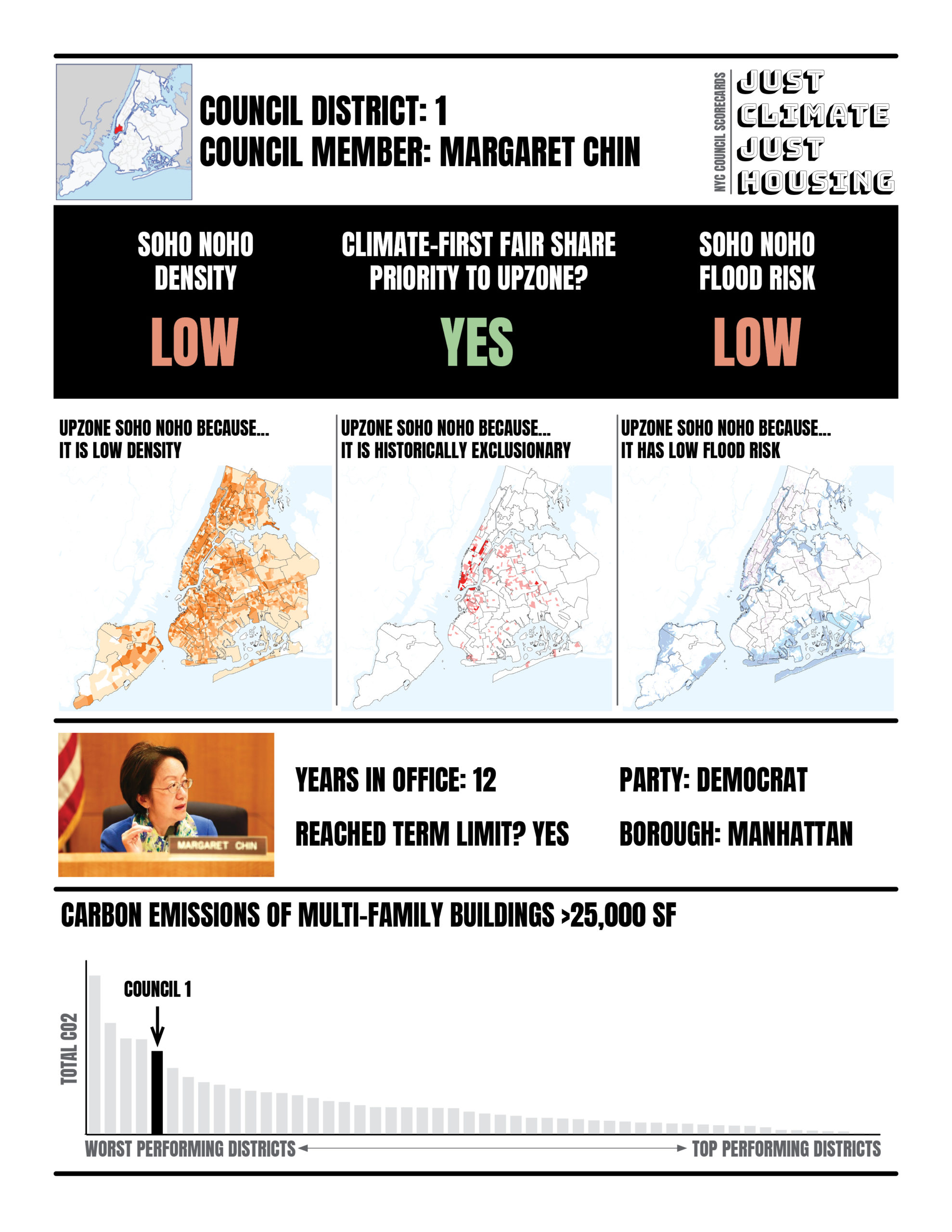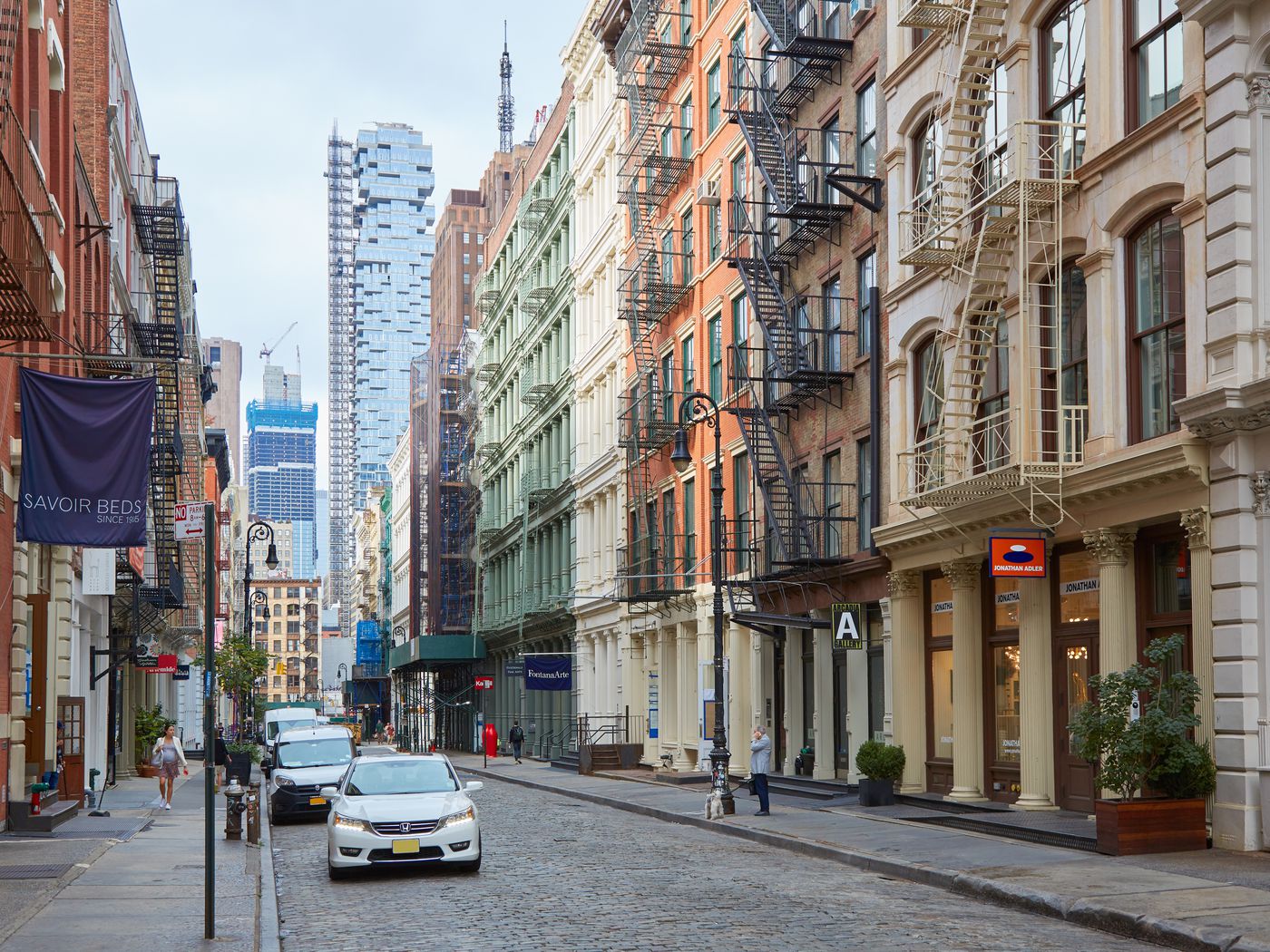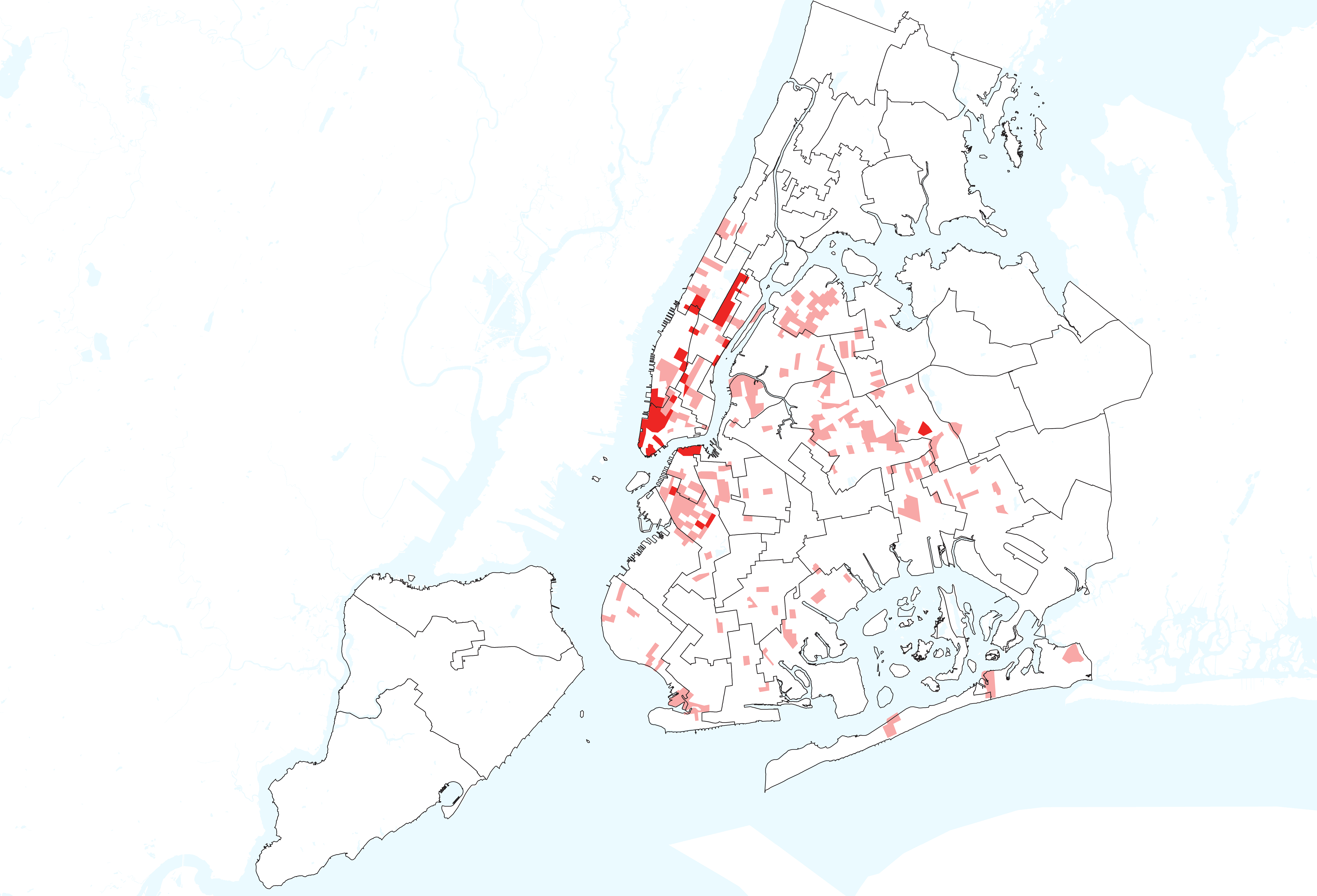
The Urban Design Forum’s 2019 Forefront Fellowship, Turning the Heat, addressed ways how urban practitioners can advance climate justice principles across New York City. In partnership with the Mayor’s Office of Resiliency, Fellows surveyed neighborhoods, studied buildings, interviewed local and international stakeholders, and produced creative research on mitigating heat. Fellows developed original design and policy proposals on creating circular economic and sustainable models in NYC, developing community resiliency within NYCHA housing, factoring design into preventative care, and establishing a climate first approach to housing which we are pleased to publish alongside interviews with leading experts.
Read interviews with Jeffrey Moelis and Will Thomas to accompany this proposal, and view the full compilation of Turning the Heat proposals and interviews here.
By Abe Bendheim, Renée Crowley, Mike Harrington, Pallavi Mantha, Mallory Taub
Introduction
New York City faces two looming challenges: climate change and access to affordable housing. While extremely intertwined, climate change policy and affordable housing policy have historically siloed. For New York to continue to be a livable and diverse city, the City must develop policies that take a climate-first approach to housing.
How can NYC develop additional housing while committing to meet carbon reduction goals? How can amenity-rich and climate safe neighborhoods densify? How can neighborhoods that have been historically exclusionary, take on a fair share of affordable housing?
In order to meet our housing and climate goals, we must require aggressive building standards, support creative financing programs and enable change that reflects the needs of the community. Through this multi-pronged approach, the City can simultaneously drive down carbon emissions while enabling equitable affordable housing development.
Context
In June 2019, New York City declared a climate emergency. Even that, the City set goals to be carbon neutral by 2050. As housing is one of the largest contributors to greenhouse gases, it provides the greatest opportunity to carbon neutralize. Now is a critical time for the City to enact solutions that address housing, equity, and climate. Over the next ten years the City needs to set in place additional measures to keep global warming to 1.5°C and to meet the housing demands associated with projected population growth.
Housing
New York City needs more affordable housing, and must ensure that housing policies address racial inequities in access to housing.
Many New Yorkers struggle to afford housing. Over the last 15 years, “median gross rents across the city have increased by over 37%, while the median income of a renter only increased by 20%.”1 Furthermore, the City’s population is projected to increase from 8.6 million to over 9 million by 2050, putting continued pressure on the housing market.
Access to housing is shaped by a legacy of racist housing policy. Housing in New York City, and across the country, has been fraught with exclusionary practices based on a number of factors, most notably race. In fact, according to Richard Rothstein, the government of the United States itself is complicit in creating inequality through restricting who can live where based on race.2 In New York, this segregation often took the form of creating explicitly segregated public housing based on race and denying “undesirable” groups of people from attaining federally backed mortgages based on redlining maps.3 Many of these practices were made illegal with the 1968 Fair Housing Act.4 Challenges to advancing fair housing have been ongoing for decades and still persist. These practices have left severe economic and social burdens due to lack of investment in segregated areas.
An increasing population, rising rents, and a history of racist housing policy set up conditions to further burden low-income and people of color with limited access to housing and continued exposure to the worst climate impacts. By not building more affordable housing, the City is closing its doors, expelling low-income residents, and homogenizing its population.
Climate
New standards for new and existing housing can play a key role in decreasing greenhouse gas (GHG) emissions. At the same time, choices about where to locate new housing must account for the impacts of climate change.
Buildings are the largest contributors to New York’s GHG emissions. Through the energy used to power, heat and cool our structures, buildings account for 73% of the overall GHG emissions. (New York’s GHG emissions profile is unique when compared to most other cities across the US primarily because of its significant transit system, density, and low rates of car ownership.5) Looking specifically at housing, existing multi-family housing accounts for 41% of NYC total building area and contributes to 29% of GHG emissions that come from buildings.6 This category is one the largest carbon offenders, and presents a tremendous opportunity to impact the city’s GHG emissions.
New York City is committed to reducing its production of GHGs by 80% by 2050 through its 80×50 plan. The plan focuses on the primary GHG generators: energy supply, waste, transportation and buildings. Through ambitious plans to meet this goal, the housing market will face dramatic changes in standards and construction protocols.
Beyond GHG emissions, the City must also take disparate climate impacts across neighborhoods into account when shaping housing development policy.
Low-income communities and communities of color are disproportionately exposed to increased climate burdens, such as greater vulnerability to extreme heat and poorer air quality than in areas of higher wealth.7 We see this reflected in higher death and hospitalization rates due to urban heat in certain areas which are predominantly low income communities of color8 and a 15 times higher likelihood that children in East Harlem and the Bronx will visit the hospital for asthma-related reasons than children in more affluent areas of Manhattan.9 The implementation of climate resiliency work is often expensive and has historically been planned for and constructed in wealthy communities where there is more economic “value”. This leaves environmental justice communities at a further disadvantage in adapting to the impacts of climate change.
Moreover, areas like the floodplain — where 800,000 New Yorkers currently live — face greater climate risk and would not be appropriate locations to continue to develop housing, especially affordable housing.10
Upzoning for Equity
New York does not have an adequate housing supply to meet the demands of population growth and climate displacement while also ensuring access to affordable housing.
Based on current housing policy and practices, further population growth would without a doubt disproportionately impact low-income and people of color. The current administration has focused upzonings and density increases in low-income communities of color such as East New York, East Harlem, Far Rockaway and Jerome Avenue in the Bronx. Eighty-five percent of the residents in these rezoning areas are Black or Latino and over half of the households earn an annual income of less than $35,000.11
To counteract the history of low-income neighborhoods shouldering the demands of the city, there is a real opportunity to increase density and affordable housing in affluent neighborhoods. As part of the Where We Live NYC policy document, the City has proposed increasing housing opportunities for low-income New Yorkers in amenity-rich neighborhoods. Unfortunately we’ve seen classic NIMBY-ism as these amenity-rich neighborhoods have expressed opposition to growth, especially when the growth includes affordable housing.12
Yet upzoning and density increases must happen in affluent, amenity-rich neighborhoods. There are neighborhoods across the city that have not been fully utilized for their potential to carry their fair share of affordable housing. To identify neighborhoods with climate-first and equity-based housing development opportunities, indicators could include access to public transportation, high-quality schools, limited risks for flooding, outside of a heat vulnerability area, and untapped opportunity for density. For these neighborhoods, we need policy solutions that are based on a principle of giving more and taking less. We need policy solutions that lead to these neighborhoods providing more housing while also reducing their carbon footprint.
Our Solutions for Climate-First Housing
We propose various solutions to tackle New York’s intertwined housing and climate challenges through climate-first housing policy. These tools relate to each other and connect in creative ways to address the need for a climate-first housing policy. We think a three pronged approach will help create positive change: require, support, and enable. The strategies for the first two focus on policy-oriented opportunities for City stakeholders, and the third focuses on actions for at the individual scale. Both action by our civic leaders and citizen advocacy will accelerate positive change.
Require:
- Aggressive standards for new construction: Our current building construction practices are deeply energy intensive, such that new construction inherently works against energy reduction goals. We need to move towards a net zero energy code for new construction in order to build equitable and sustainable housing without further contributing to carbon emissions. California has already started to establish strict requirements for all new commercial construction to be in line with net zero energy standards by 2030.
- Aggressive standards for existing buildings: Older buildings lack energy efficiencies and are not designed to meet goals set within Local Law 97. Landlords with financial means are able to afford to pay the fines for noncompliance, but this further perpetuates excessive energy use. The City needs to mandate landlords to upgrade their existing buildings to meet the standards of Local Law 97 and not give landlords with financial means to pay their way out of compliance.
- Mandate a fossil fuel ban for buildings in the next five years: The fossil fuel industry has not received appropriate pressures to decrease GHG emissions in our buildings. Buildings need to transfer to a zero-emission alternative and make building energy supply all-electric. For example, San Francisco, CA has passed a ban on fossil fuels in all new construction starting in June 2021.
- Mandate performance metrics for City Council districts: By imposing neighborhood-level performance metrics, the onus of meeting emissions goals is shifted from individual buildings to a neighborhood, allowing flexibility in the planning and upzoning of the neighborhood. District-by-district would set the standard for each City Council district to provide its fair share of affordable housing and carbon emissions, following the model of the Everyone In campaign in Los Angeles, CA, which sets shared targets for building supportive housing across every City Council district.
Support:
- Improve financing tools to support the premiums associated with low-carbon design and retrofits. Property Assessed Clean Energy (PACE) financing provides an opportunity for affordable long-term loans for sustainability improvements to a home. PACE financing needs to be made more attractive to building owners. One of the existing challenges with the program is that when a PACE loan is tied to a home, it makes it hard for the owner to sell. To make the PACE program more enticing and successful, underwriters should be encouraged to account for the total operational energy savings when assessing loans.
- Incentives for developers: The City could provide FAR bonuses to developers who choose to build beyond the existing energy code. A study by Urban Green Council found that this policy was widely used, especially in affordable housing.13 Examples of related green density bonus legislation in commercial development include Pittsburgh offering additional floor area and building height for meeting LEED standards, and floor-to-area ratio (FAR) bonuses for green building in Emeryville and San Diego.14, 15 A study by the National Association for Industrial and Office Parks (NAIOP) suggests that additional incentives to encourage green development could include expedited permit processing, tax reductions, and expedited plan review.16
Enable:
- Scorecards for City Council Members: To enable a future for equitable new construction, City Council members need to be held accountable for furthering climate-first fair share housing policies. The creation of a Council District scorecard that grades councilmembers on their contribution to building affordable housing and meeting carbon reduction goals could help to illuminate which districts need to improve. As a precedent for this type of tool, the NY League for Conservation Voters created scorecards for NY State Senate and Assembly members’ support for environmental bills and policies. A tool like this enables the public to hold their elected officials accountable.
- Public accountability in City Council: City Council members won’t enact change without pressure from residents in their districts. The public should be actively encouraged to influence their local City Council members. A scorecard like the one mentioned above could be a critical tool for the public to engage with their councilmembers and demand improvements.
- Public participation in local politics: The voice of individuals can be very strong when it comes to instituting local change. There are many opportunities to participate in local government and politics:
- Write a letter or call your City Council Member: Elected officials are accountable to their constituents, so let your City Council Member know that you support equity, density and climate justice.
- Run for office: 68% of city council seats are up for re-election in 2021. Now is a ripe moment to bring new ideas and policies around climate-first equitable housing to the city council.
- Join your community board: Community boards play an active role in shaping local communities.
- Stay informed and share information: Projects can sometimes be shut down based on misinformation. Get to know the issues and let others know the real details for community projects.
Case Study: SoHo NoHo
One way that New York has put a dent in this legacy of inequality is to adopt strategies that tackle exclusionary zoning and ensure every neighborhood is open to housing for all, particularly in neighborhoods with more wealth and resources proven to help address intergenerational poverty. There is a current proposal to upzone and increase density in SoHo and NoHo, which are job centers, very wealthy, predominantly white, not in a flood zone, well-connected to transit, amenity-rich, and known for quality schools. The benefits of bringing people into this neighborhood are manifold and would make these resources available to a more diverse population. Given the timeline of the discussion around this neighborhood, we utilize this as a case study to examine policy strategies to diversify the demographics of the neighborhoods.
SoHo/NoHo is a great test bed for our Require, Support and Enable proposals because if it is upzoned for development, there will be opportunities to put strong standards on any new housing or floor additions to the existing building stock. There could also be FAR bonuses for developers that choose to go above and beyond the energy code when building or expanding on existing edifices. Residents of this district should be encouraged to reach out to Margaret Chin’s office and attend council meetings to express interest in upzoning SoHo/NoHo. Overall, decisions made to upzone and increase affordable housing here will impact the affordability of other neighborhoods. The ripple effects of adding housing in one neighborhood as a way to provide its fair share, can help other communities with affordability pressures.
Members of the “Yes, in my Backyard” (YIMBY) group, Open New York, have been exceptionally vocal advocates of a SoHo/NoHo rezoning, calling it, “upzoning for equity.” They have been demonstrating that anyone can be part of the zoning process, not just the politicians and city officials that design and implement zoning policy. This is a critical step needed to call New York a progressive city and ensure fairness in our land use decisions. Open New York has identified sites that could accommodate new housing in the SoHo/NoHo area without necessarily impacting the historical character of the neighborhood.
In short, the City needs to take steps to advance SoHo/NoHo into a formal rezoning process, and we need to be vocal as citizens to make sure that it includes incentives to build more equitably and less carbon intensively. To date, the neighborhoods the administration has rezoned have been predominantly neighborhoods of color. A rezoning in a famously wealthy and predominantly white neighborhood would send a strong message around the importance of tackling exclusionary zoning in NYC and set an example that all neighborhoods — especially those identified as amenity-rich, transit-rich, high-ground neighborhoods — are responsible for building their fair share of housing.
Conclusion
Housing and climate policy are deeply intertwined, but New York has had separate policies to address each challenge. Now is the time to begin planning comprehensively for housing and climate. Today’s upzonings are what will drive NYC’s housing growth over the next decade. The next 10 years are critical for climate change, too. We have 10 years to make dramatic changes to our carbon emissions and keep global warming to 1.5°C. If we don’t enable housing to be built in strategic locations and adopt carbon reduction practices now, we will lose the city as we know it.
Together, as a city, we can require, support, and enable a climate first and fair share approach to housing for all New Yorkers. Driving equitable low carbon housing density through policy is an adaptive challenge that requires a much stronger political push. While the great New Yorker Audre Lorde believed that “the master’s tools will never dismantle the master’s house [and]…never enable us to bring about genuine change,” this is a case where the master’s tools could be used to dismantle the master’s housing system and help the city reach its carbon goals if done right.
